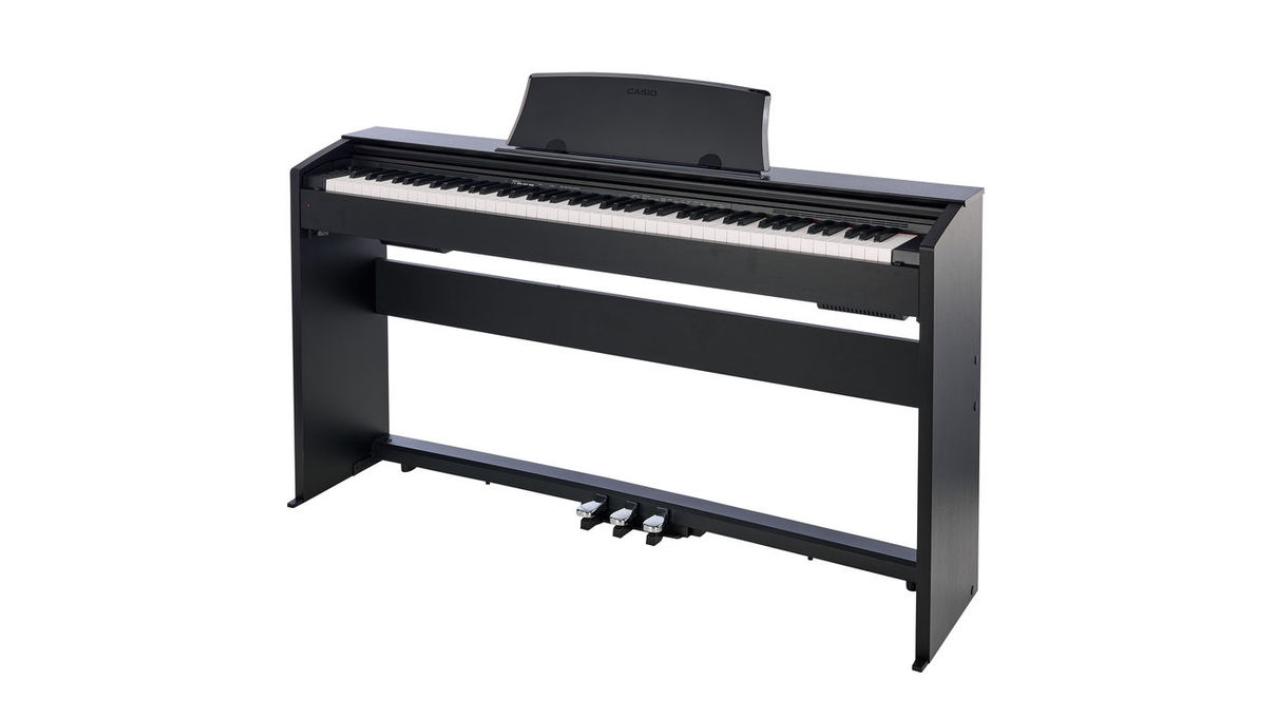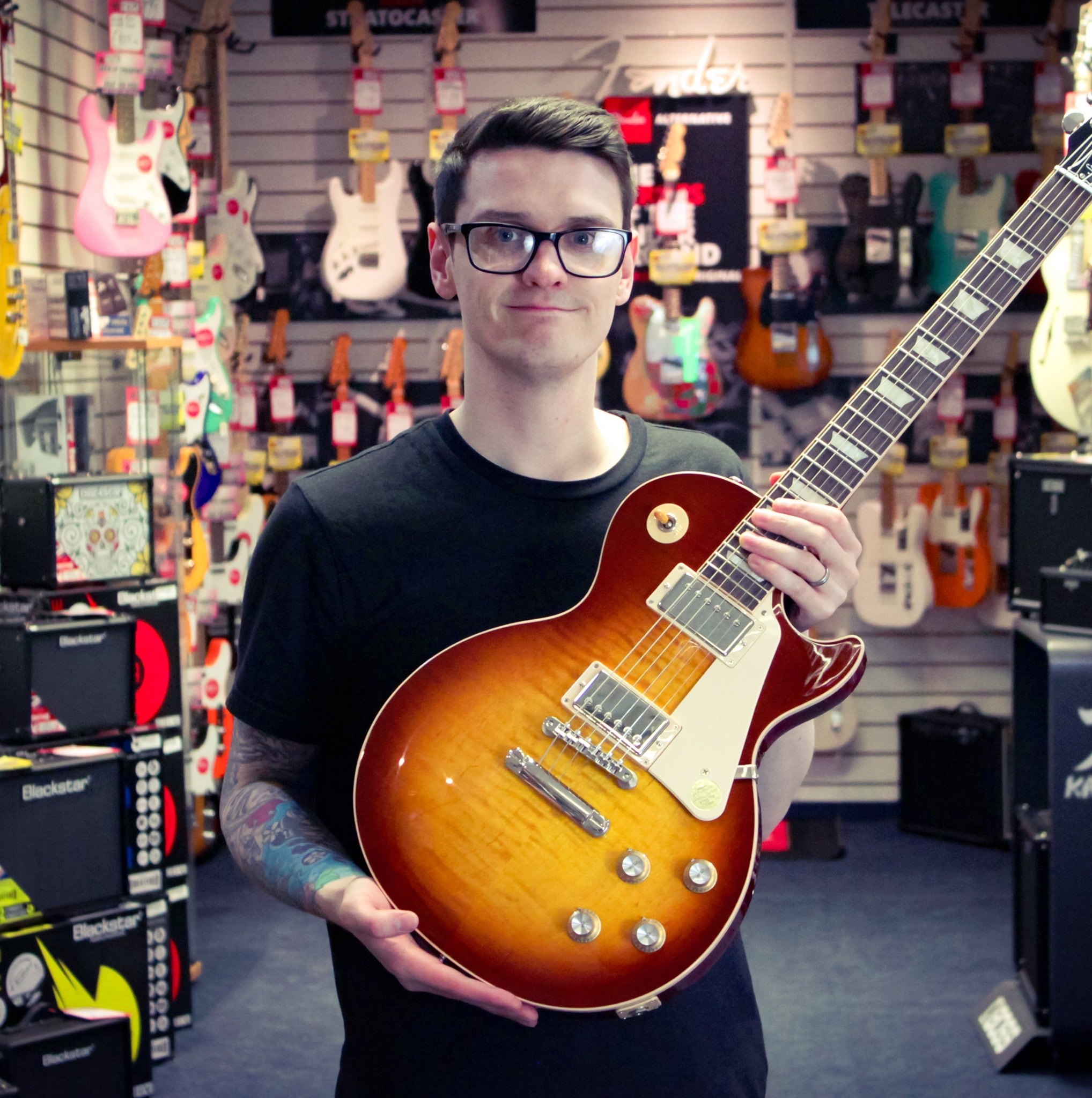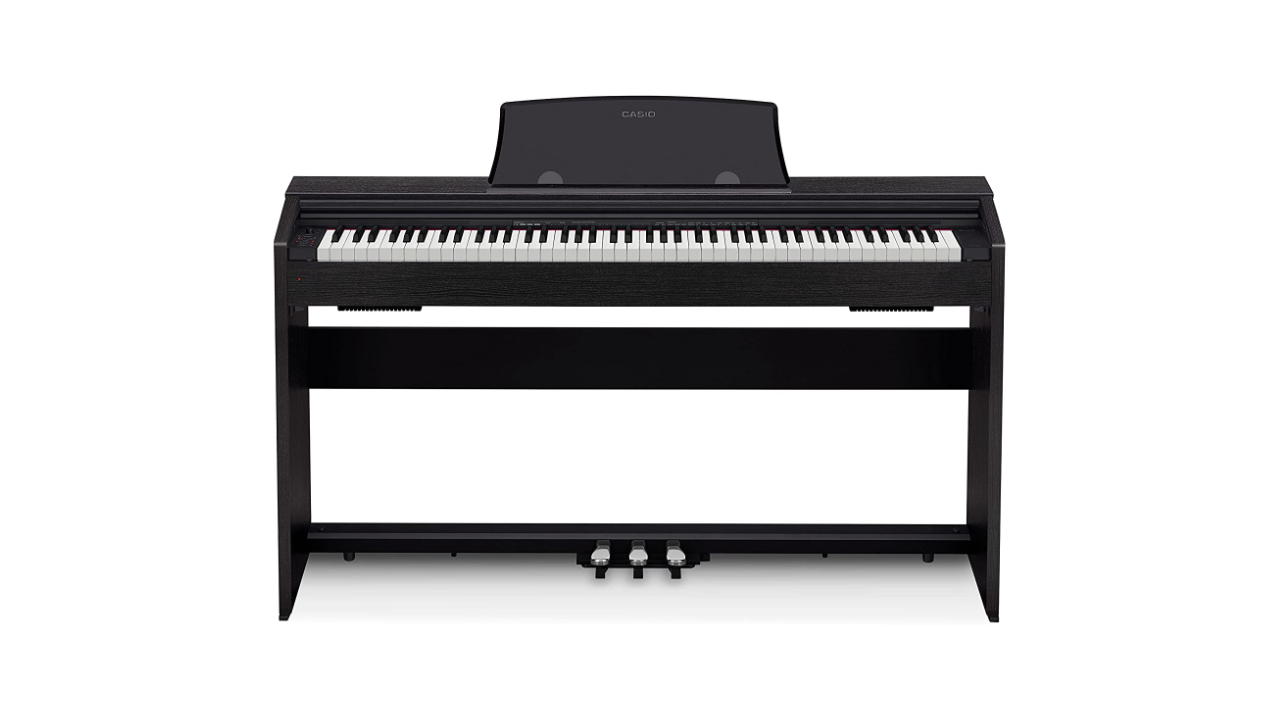MusicRadar Verdict
The Casio PX-770 is an impressive compact digital piano that offers fantastic value for money. The weighted - yet not heavy - key action is perfect for beginners, and the small size means it will fit in almost any room.
Pros
- +
Small and compact
- +
Nice key action
- +
Good range of sounds
Cons
- -
Speakers lack volume and bass
- -
No Bluetooth
MusicRadar's got your back
What is it?
In recent years we've seen more and more demand for a compact beginner digital piano that provides the same level of performance as a larger upright. Whether you simply don’t have space for an acoustic piano, don’t want to deal with the issue of tuning, or you want to take advantage of the various modern features, a digital piano can be just what you need. Not to mention the ability to practice silently comes in very handy when you don’t want to subject your housemates to hours and hours of scale practice.
The Casio Privia PX-770 is a modern slimline digital piano that will comfortably fit in most homes, and more importantly, will provide the perfect platform for beginners to learn. Featuring 88 fully weighted keys, 19 high-quality voices, and a range of effects, the Casio PX-770 offers a lot for its relatively small price tag.
The Tri-Sensor II Hammer Action provides the PX-770 with an authentic piano feel while allowing the player to fully express themselves as they would on an acoustic piano. The Simulated ebony and ivory keys add to this authentic feel by replicating the texture found on vintage instruments, while the “Multi-dimensional Morphing AiR Sound Source” is dedicated to reproducing the dynamics of the real piano and providing the best sound possible.



Performance & verdict
It’s hard to review a piano without first talking about how easy it is to build - considering it’s the first thing you need to do before you get to play it - so let’s start there. Considering this is a full 88-note piano, the PX-770 comes in one relatively small box. This is a very comfortable lift for two people - weighing in at only 39kg. In terms of parts, there really isn’t that much to put together. You simply have to screw the pedalboard to the two legs, add the support beam, then finally slide the top keyboard section into place - that’s it. There’s a very clear set of instructions included, and it can easily be fully built by one person. So for anyone purchasing a PX-770 online, don’t let the idea of building it put you off - it’s a breeze.
With that out of the way, how does it play? Overall it’s a great feeling piano to play. It’s got to be said that Casio is known for having a very light key action. This isn’t a good or bad thing. It’s a personal preference whether you prefer a light or heavy action. We believe this is an excellent action for beginners to intermediate players looking for weighted but not heavy keys. The keys feel quite responsive, and the Tri-Sensor II action does provide a decent amount of expression and a realistic feel. The keys themselves do feel a little on the cheap side, but let’s be fair, for the price point, it’s a minor complaint.

Casio AP-470: The AP-470 is the big brother of the PX-770, with a larger footprint and an upright look.
Yamaha YDP-144: This entry-level Yamaha has a heavier key action and a truly outstanding build quality.
Roland RP102-BK: When it comes to sounds, Roland wins hands down. The RP102 delivers professional-grade tones and a budget price.
There’s a great range of voices included - although we wouldn’t expect any less from Casio. All 19 of the built-in sounds are very usable. Nothing seems like it’s added just for the sake of having an extra voice. The highlights have to be the “modern piano,” which has a nice bright attack perfect for playing along with contemporary pop songs, and the “grand piano,” which will easily go up against the more expensive pianos from the likes of Roland and Yamaha. To select which sound you want, you hold down the function button and press the key that corresponds to the voice. This works pretty well, but personally, we would prefer a small screen with a menu for selecting sounds. Again this is a minor complaint and not a deal-breaker.
As good as the sounds are, we do feel the speakers somewhat let the PX-770 down a little. The dual 8W speakers lack bass and are a little on the quiet side. To get the best out of this piano, we would recommend a nice set of studio headphones. While we are on the subject of the studio, home producers will be pleased to hear there’s a USB out that can be used to turn this piano into a massive MIDI controller, while the headphone out can be used as a direct out for recording the audio straight into your DAW.
There’s a great range of voices included - although we wouldn’t expect any less from Casio.
The small form of the Casio PX-770 is rather impressive. Once fully built, it isn’t that much bigger than a keyboard with a keyboard stand, meaning it will easily fit in most rooms with no problems at all. The small size means it’s also very light and easy to move once built.
So, if you're looking for an 88-note, fully weighted keys piano but don’t have space for an upright or even a standard digital piano, then this is by far one of the best options on the market - especially considering the price.
- Explore the best digital pianos for beginners
- Our pick of the best digital pianos under $1,000/£1,000
Hands-on demos
Gear4music
Kraft Music
Sweetwater
Specifications
- Keyboard: 88-key, Tri-sensor Scaled Hammer Action Keyboard II, Simulated ebony and ivory keys
- Touch Response: 3 sensitivity levels, Off
- Sound Source: AiR Sound Source
- Maximum Polyphony: 28
- Tones: 19 built-in tones: Grand Piano (Concert, Mellow, Bright), Modern Piano, Rock Piano, Jazz Piano, Elec Piano 1, Elec Piano 2, FM E. Piano, 60`s E. Piano, Harpsichord, Vibraphone, Strings 1, Strings 2, Pipe Organ, Jazz Organ, Elec Organ 1, Elec Organ 2, BASS (LOWER)
- Digital Effects: Reverb (4 types), Chorus (4 types), Brilliance(-3 to 0 to 3), DSP (preset for some tones)
- Built-in Songs: 10 (Concert Play), 60 (Music Library) songs
- Metronome: Beats: 0 to 9 (Tempo range: quarter note = 20 to 255)
- MIDI Recorder: 2 tracks x 1 song, approximately 5,000 notes maximum, real-time recording/playback
- Pedals: 3 pedals (damper, soft, sostenuto)
- Speakers: 12cm x 2, 8W
- Input/Output Terminals: PHONES/OUTPUT x 2 (Stereo standard), USB: type B, External power (12V DC)
- Dimensions: (W x D x H): 1,391 x 299 x 798 mm
- Weight: 31.5kg
- Contact: Casio

I'm a Senior Deals Writer at MusicRadar, and I'm responsible for writing and maintaining buyer's guides on the site - but that's not all I do. As part of my role, I also scour the internet for the best deals I can find on gear and get hands-on with the products for reviews. My gear reviews have been published in prominent publications, including Total Guitar and Future Music magazine, as well as Guitar World.com. I've also had the privilege of interviewing everyone from Slash to Yungblud, as well as members of Sum 41, Foo Fighters, The Offspring, Fever 333 and many more.
I have a massive passion for anything that makes a sound, particularly guitars, pianos, and recording equipment. In a previous life, I worked in music retail, giving advice on all aspects of music creation and selling everything from digital pianos to electric guitars, entire PA systems, and ukuleles. I'm also a fully qualified sound engineer who holds a first-class Bachelor's degree in Creative Sound Production from the University of Abertay and I have plenty of experience working in various venues around Scotland.
“Every one of them said yes without hesitation": Hank Marvin and Roger Taylor have just remade a '60s classic for charity
Do you know where your money goes when you buy a gig ticket? A new report breaks it down
“Every note counts and fits perfectly”: Kirk Hammett names his best Metallica solo – and no, it’s not One or Master Of Puppets










